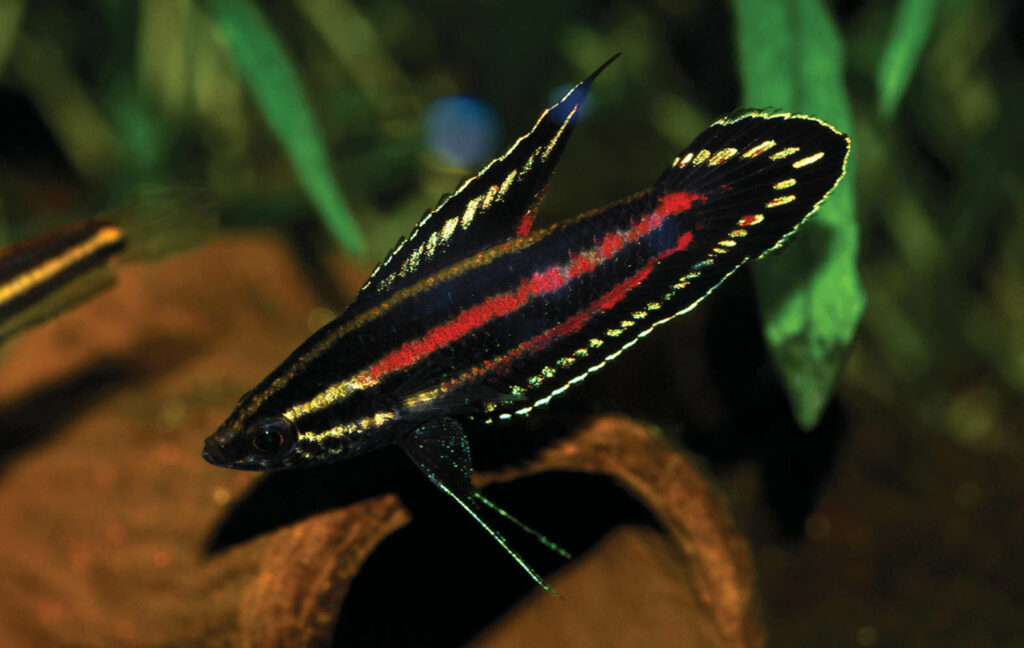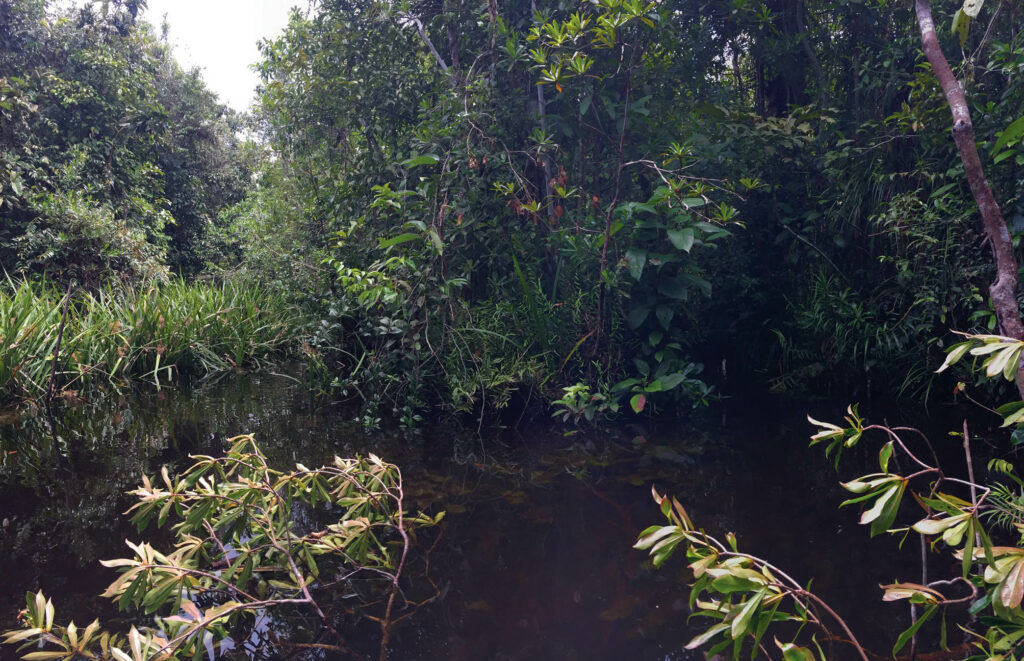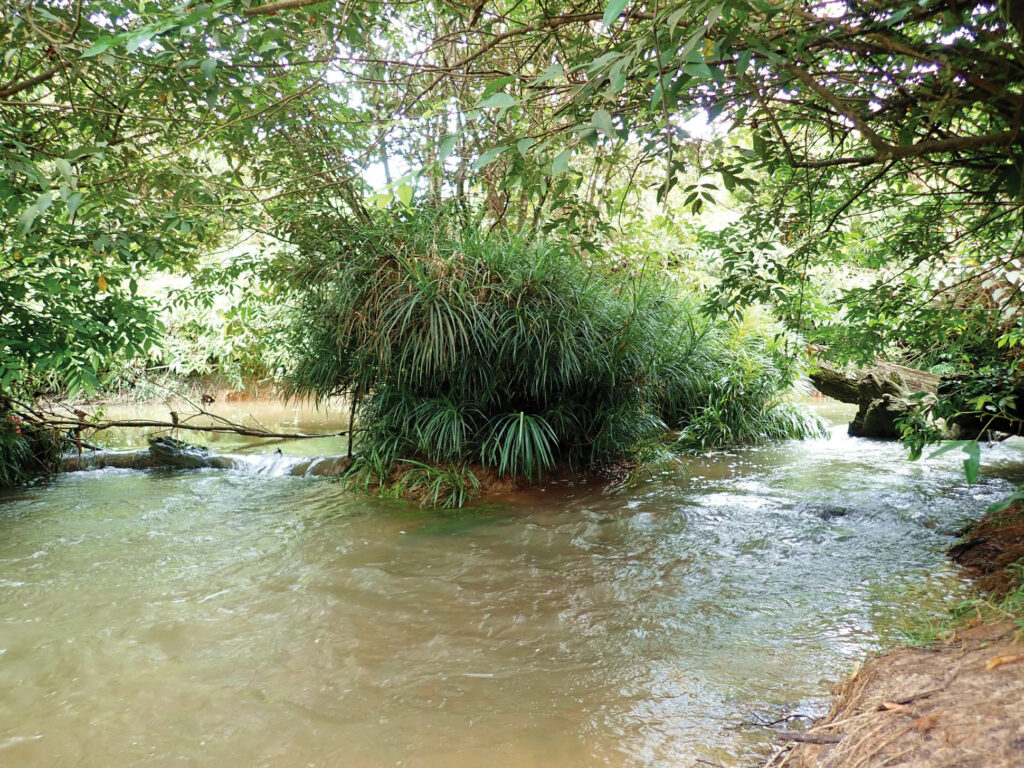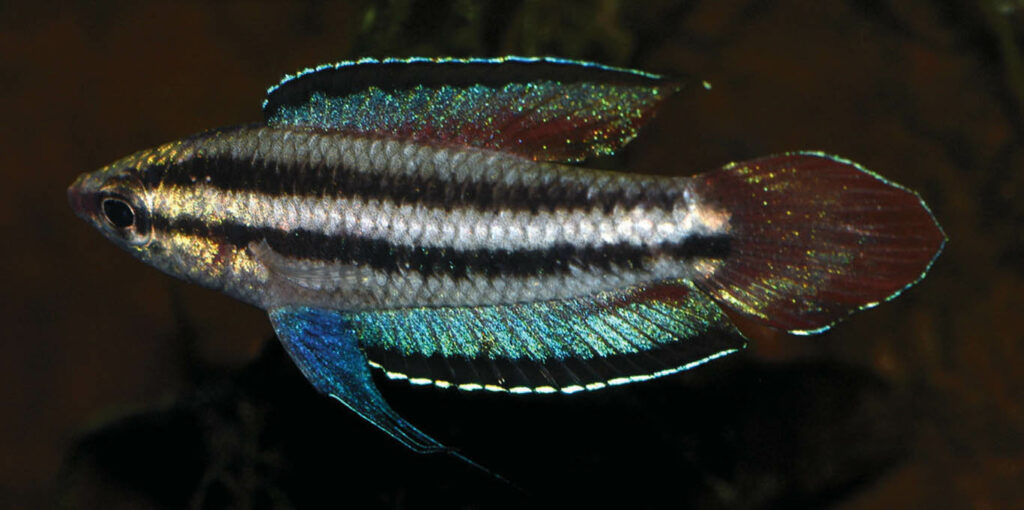
Researchers have described two new species of Parosphromenus, a genus of small anabantoids collectively known as licorice gouramis in the aquarium hobby, from Bangka Island and Kalimantan in Indonesia.
The article, Diagnoses of two new species of Parosphromenus (Teleostei: Osphronemidae) from Bangka Island and Kalimantan, Indonesia, authored by Wentian Shi, Shujie Guo, Haryono Haryono, Yijiang Hong, and Wanchang Zhang, was published in the journal Zootaxa, and for the moment is currently available to read in full as a PDF download.

The new species already face serious threats to their future well-being. Researchers have already concluded that at least one local population of Parosphromenus juelinae has likely been wiped out, their swamp drained and converted into a rice paddy field. With extremely limited range, researchers are calling for this new species to be listed as Critically Endangered.
P. kishii is even more at risk, as evidenced by the fact that its type location was actually withheld from publication. Researchers do disclose that it is known only from a single river that has already been heavily altered by man, flowing through an oil palm plantation. They insist on immediate in- and ex-situ conservation measures to preserve this species, and again call for this species to be listed as Critically Endangered by the IUCN.

From the abstract…
“Parosphromenus juelinae, sp. nov., occurs on Bangka Island. Its unpaired fin coloration is similar to that of P. deissneri, but it differs from the latter in having a rounded caudal fin with a non-filamentous branched median ray and a smaller anal fin. Although the new species has the same caudal fin structure as P. bintan, it can be distinguished from the latter by its distinct unpaired fin coloration and the intense red color on the body flanks. Parosphromenus juelinae, sp. nov., occurs on Bangka Island. Its unpaired fin coloration is similar to that of P. deissneri, but it differs from the latter in having a rounded caudal fin with a non-filamentous branched median ray and a smaller anal fin. Although the new species has the same caudal fin structure as P. bintan, it can be distinguished from the latter by its distinct unpaired fin coloration and the intense red color on the body flanks.”

“Parosphromenus kishii, sp. nov., is found only in a single river system in Kalimantan Tengah. It is distinguished from all other congeners by the unique coloration of its caudal fin. A phylogenetic tree based on the cytochrome b (cytb) gene indicates that the two new species are distinct monophyletic groups constituting distinct phylogenetic branches from their congeners. Cytochrome b Genetic distances between Parosphromenus juelinae, sp. nov., and Parosphromenus kishii, sp. nov., and the other taxa in the phylogenetic tree range from 2.44% to 19.52% and from 8.65% to 17.28%, respectively.”
Worth A Read!
We encourage you to read the full article, currently available as a PDF download via Zootaxa. The journal article includes many more stunning images, informative diagrams, and much more in-depth information. Visit now, as, despite the notation that the article was published under Creative Commons license, it’s unclear whether this article was published as a perpetual open-access offering, or if this is simply a time-limited opportunity!
Reference
SHI, W. ., GUO, S. ., HARYONO, H. ., HONG, Y. ., & ZHANG, W. . (2021). Diagnoses of two new species of Parosphromenus (Teleostei: Osphronemidae) from Bangka Island and Kalimantan, Indonesia. Zootaxa, 5060(1), 71–92. https://doi.org/10.11646/zootaxa.5060.1.3






Beautiful! Can some be caught and maybe breed them in captivity to protect them from extinction?